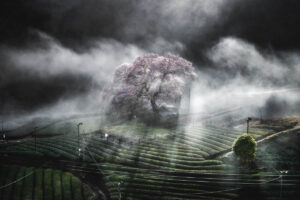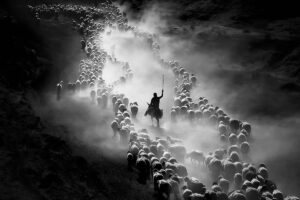![]()
A new documentary explores the life of South Africa’s first Black freelance photographer Ernest Cole who was one of the most important chroniclers of apartheid.
Ernest Cole: Lost and Found tells the story of the groundbreaking photographer whose whose early images of Black life under apartheid shocked the world but whose later photographs of America were thought to be lost until 2017.
The documentary, which is directed by Raoul Peck and stars Lakeith Stanfield as the voice of Cole, opens in theaters on Friday.
The film was made with the full collaboration of the Ernest Cole Family Estate and is laced throughout with his photographs — including images never previously seen by the public.
According to The Guardian, Ernest Cole: Lost and Found explores the publication of Cole’s pioneering photography book “House of Bondage,” which exposed the casual horrors of apartheid in South Africa and led him to be banned from his home country.
Peck’s film also explores some of the 60,000 negatives that mysteriously surfaced seven years ago in a Swedish bank vault in 2017. The negatives were lost images that Cole had taken while he was living in the U.S., touring the American South as well as Europe, before he became despondent, houseless for some years, and fell off the map.
A Photographer: Lost and Found
Born in 1940 in the Eersterust township, near Pretoria, South Africa, Cole witnessed the formalization of the apartheid regime growing up as a child.
When he was a teenager, Cole began working for Drum, a South African magazine geared toward Black readers.
As South Africa’s first Black freelance photographer, he was in a unique position to detail what was happening in his country. His early photography is known for revealing the horrors of apartheid to the world.
However, Cole’s work earned the ire of apartheid enforcers by capturing the human costs of the regime. At the age of 26, the South African authorities arrested Cole and labeled him a “banned person” for his photography.
In 1966, Cole fled South Africa and moved to the U.S. Cole’s House of Bondage was published the following year — the first and only book of those early South African photographs published during his lifetime.
However, throughout the late 1960s and early 1970s, Cole traveled across America and photographed extensively in New York City, Chicago, and the American South.
Cole was fascinated by the ways that the country mirrored his homeland’s segregated culture. It was a critical time in the United States, with the Civil Rights Movement peaking and tensions rising after the assassination of Martin Luther King Jr.
However, Cole never published these images of America in another book and his photographs were seemingly lost. Cole died in exile in New York City in 1990.
But according to The Atlantic, in 2017, a member of Cole’s family was mysteriously invited to Stockholm at the behest of a Swedish bank.
There, in three safety-deposit boxes, were more than 60,000 of his 35mm film negatives, many taken during Cole’s years in America.
In January this year, 260 of Cole’s images of that period were published in a book called The True America.








 English (US) ·
English (US) ·